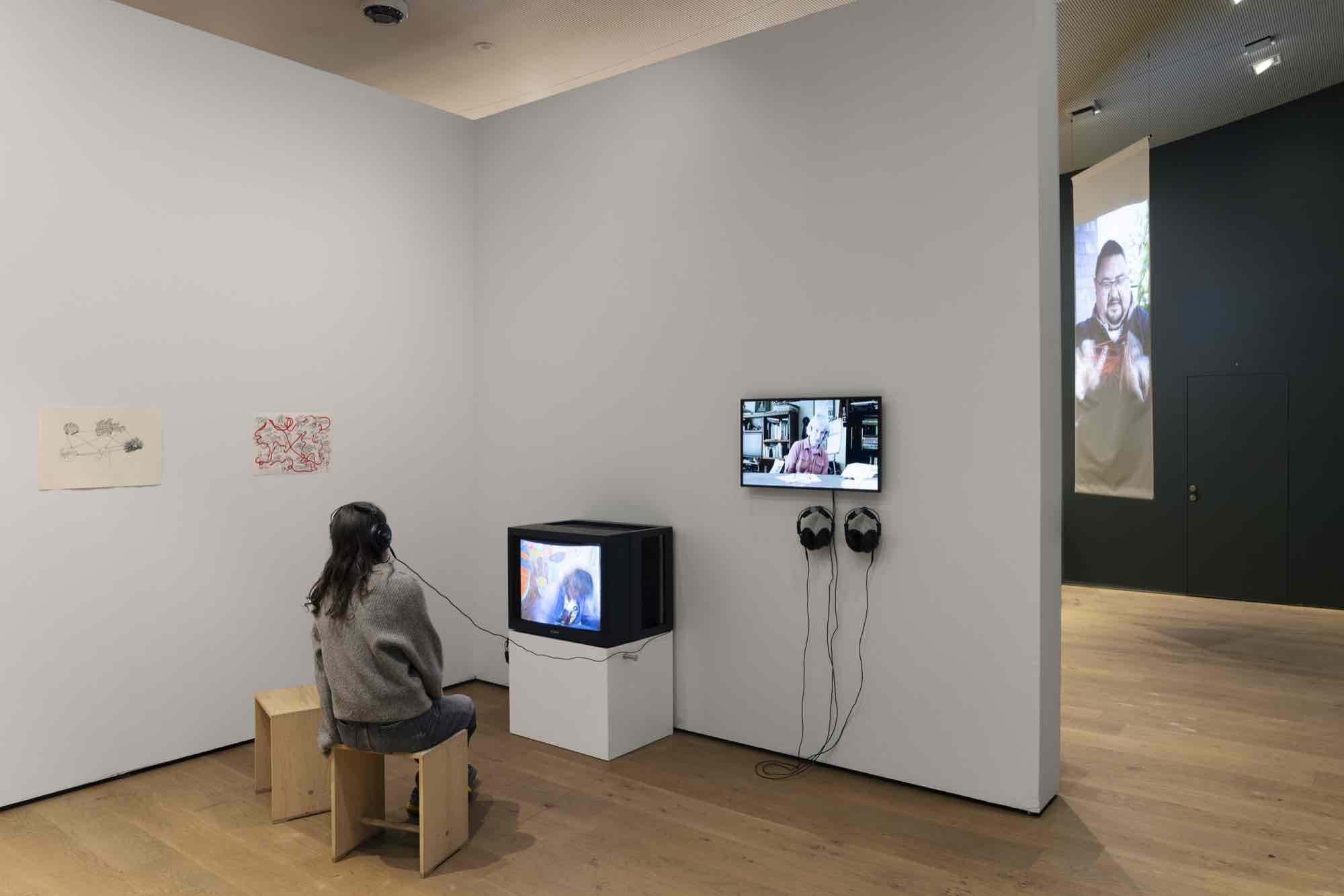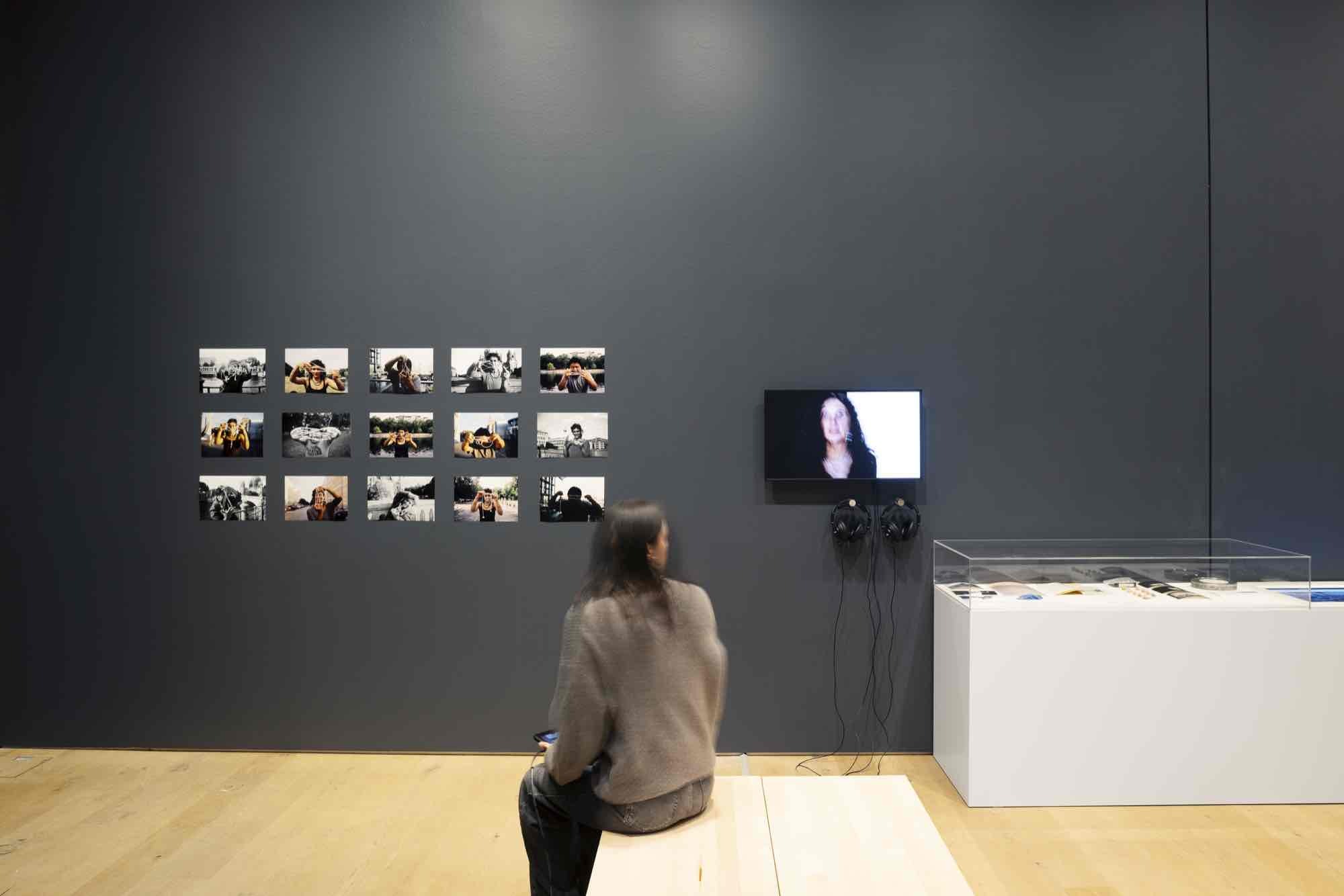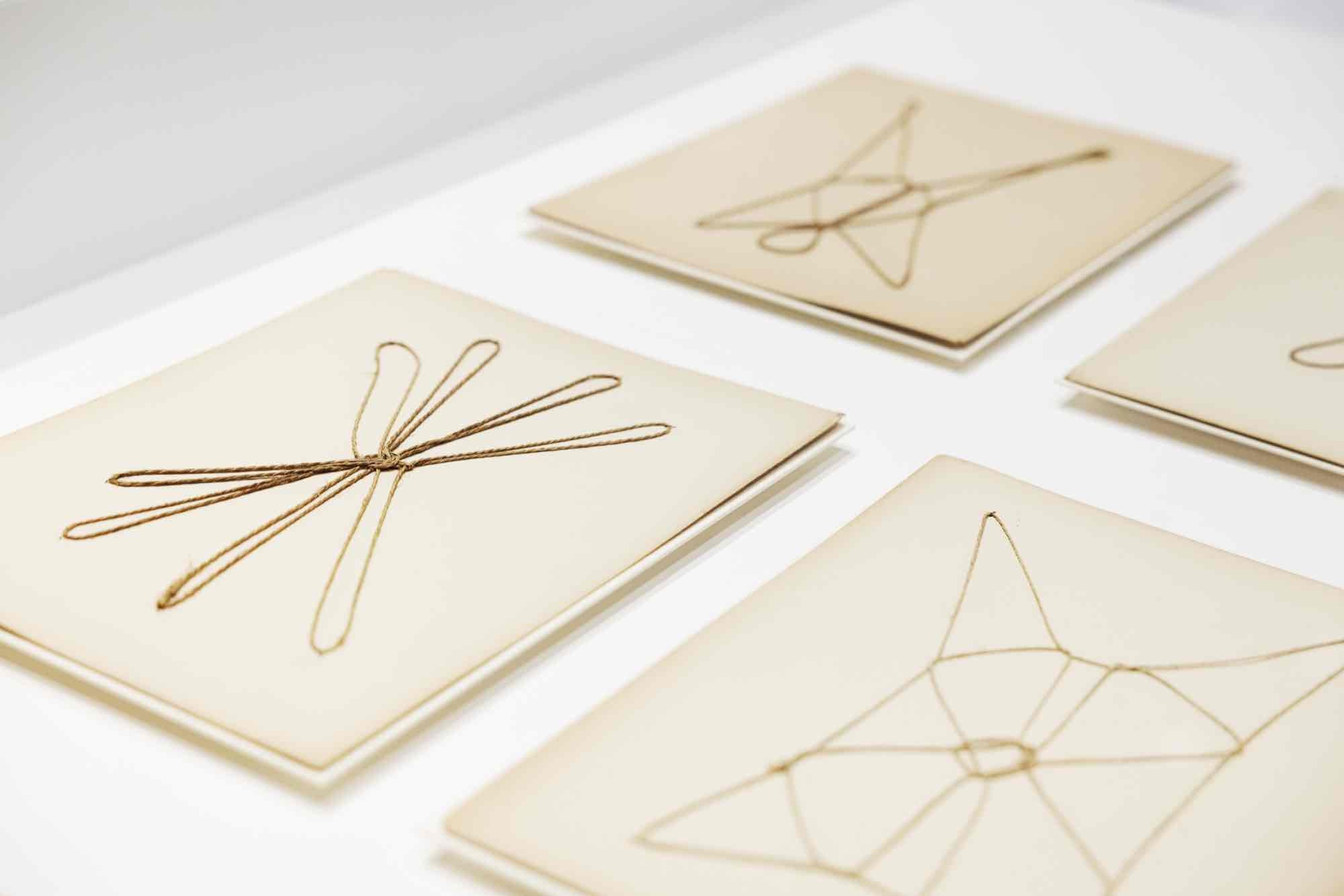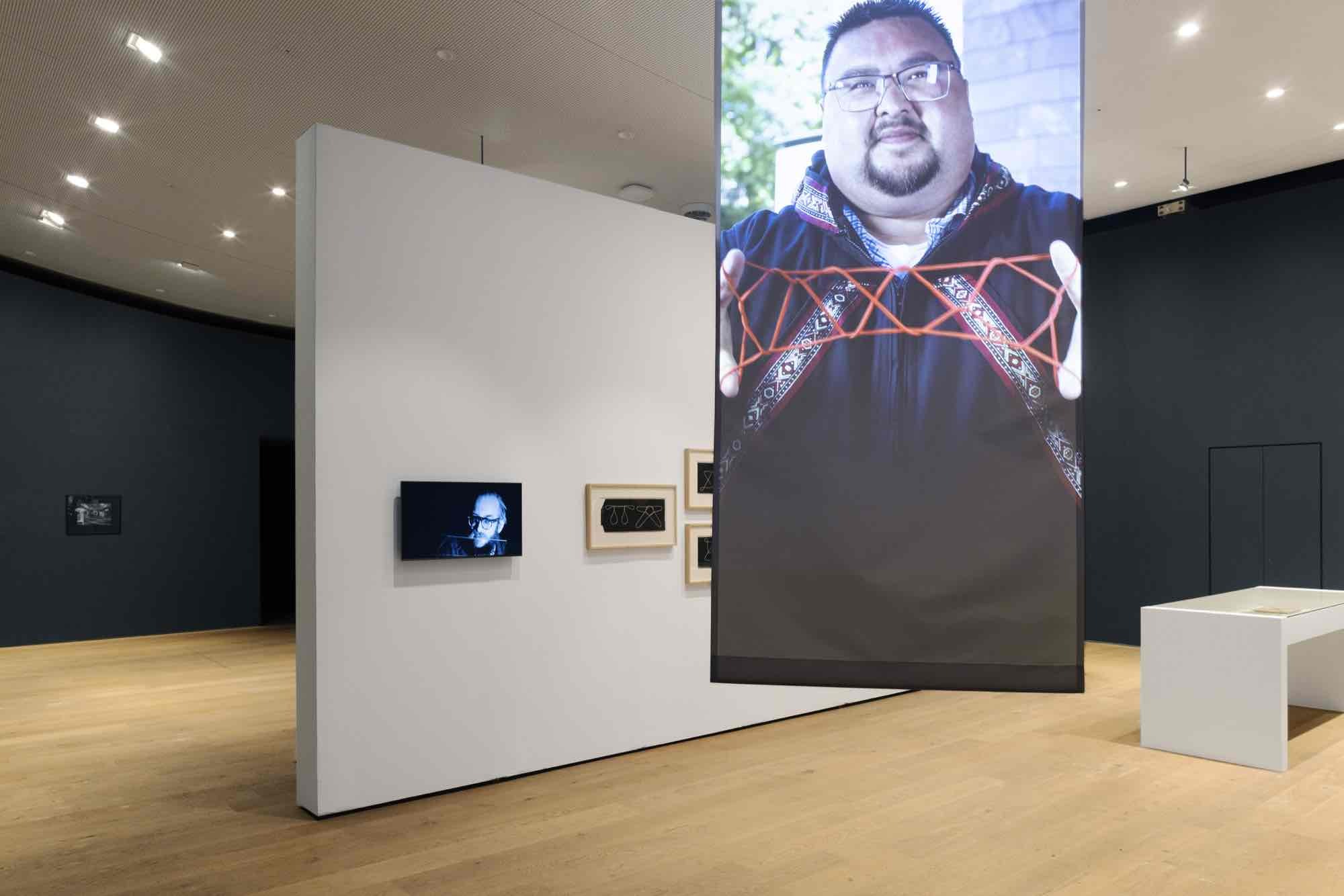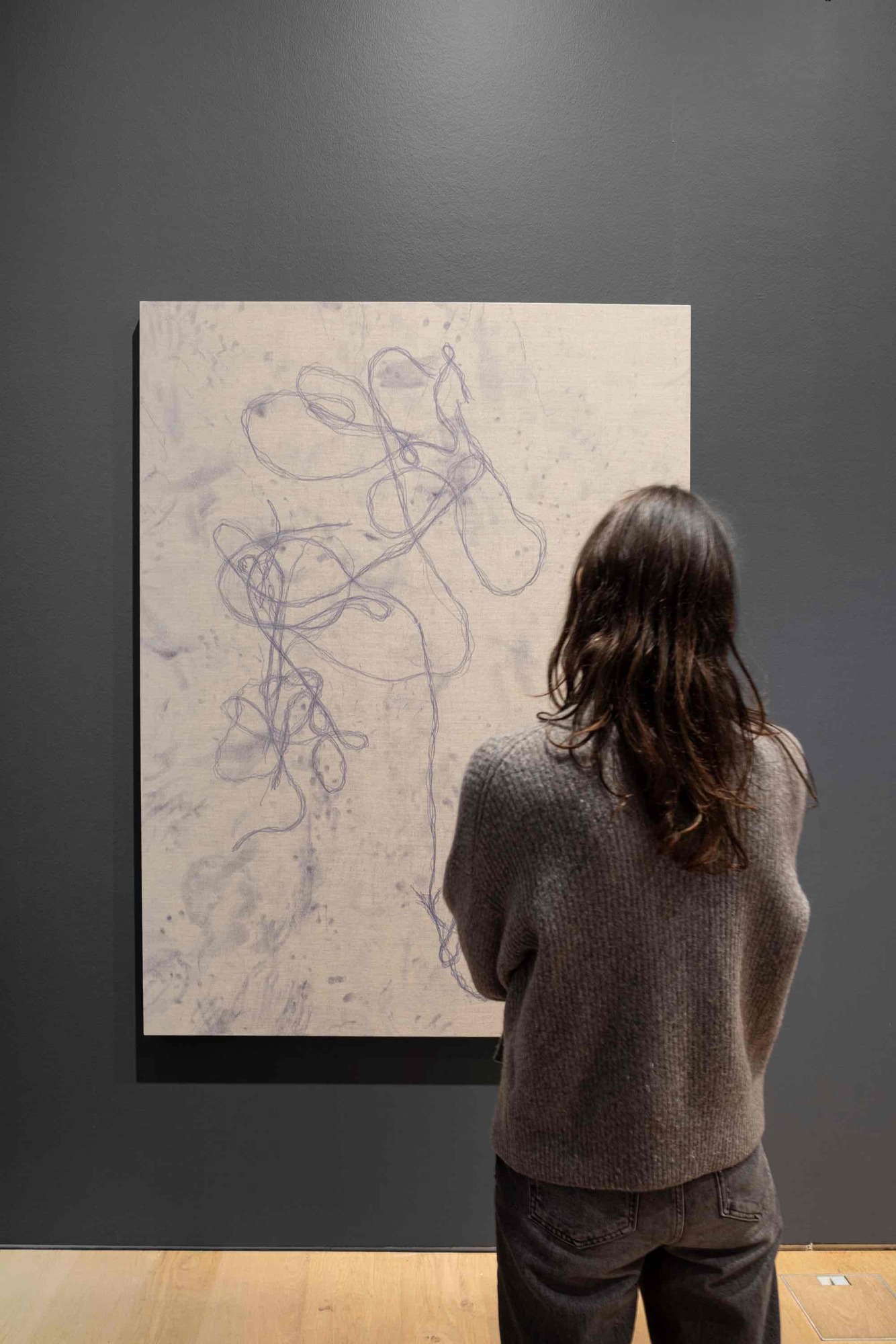String Figures
A Research Exhibition
20 Nov 2024 - 09 Mar 2025
For instance, experimental film pioneer Maya Deren filmed Marcel Duchamp making string figures, just after he had used up kilometers of string in his surrealist exhibition design. Maureen Lander, in turn, decolonized Duchamp’s Boîte-en-valise by repackaging his famous small suitcase museum with photographs of Māori String Figures. Andy Warhol captured the string-playing Harry Smith, a border crosser between folklore and art, in one of his Screen Tests. And Alaskan engineer David Ket’acik Nicolai presents the figures he learned from his grandmother on TikTok as Yu’pik Dave.
In anthropology, string figures were long regarded a universal game. As a body practice that can be found in many places of this world, it fed the epistemological fantasies of a universal cultural comparison throughout the 20th century. As early as 1888, Franz Boas described the string figures of the Kwakiutl. Subsequently, European-American (often female) ethnologists ‘collected’ string figures, mounted them on cardboard or made drawings and photographs. However, such media do not provide any information about the making of the figures, which is why complex notation systems have been developed. Ethnologists have also made films of string figures and their makers in order to do justice to the processuality, performativity and physicality of the practice. Some of these films can be found in the Encyclopaedia Cinematographica, which aimed to collect the world on celluloid and preserve it according to the principles of Salvage Anthropology.
In recent years, string figures have gained prominence in cultural theory. Donna Haraway promotes string figures as a method of interdisciplinary and interspecies thinking and collaboration. Unlike the technicist metaphor of the network, Haraway’s string figures provide a playful, process-oriented, embodied (and non-Western) way of thinking, emphasizing responsibility.
This exhibition brings together these diverse strands of art, anthropology, and theory, fostering connections among people from different regions of the world and exploring ways of playing together on the ruins of our history.
With works by:
Maya Deren, Mulkuṉ Wirrpanda, Moritz Greiner-Petter, Donna Haraway, Maureen Lander, Caroline Monnet, Nasser Mufti, David Ket’acik Nicolai, Christoph Oeschger, Harry Smith, Edgar Calel and Maju Vicentin, Jan Bachmann, Katrien Vermeire, Piet Esch, Siena Miḻkiḻa Stubbs, Toby Christian, Seraina Dür andJonas Gillmann, Andy Warhol, Isabel McLeish, among others.
Curated by Mario Schulze and Sarine Waltenspül, co-curator Andres Pardey.

